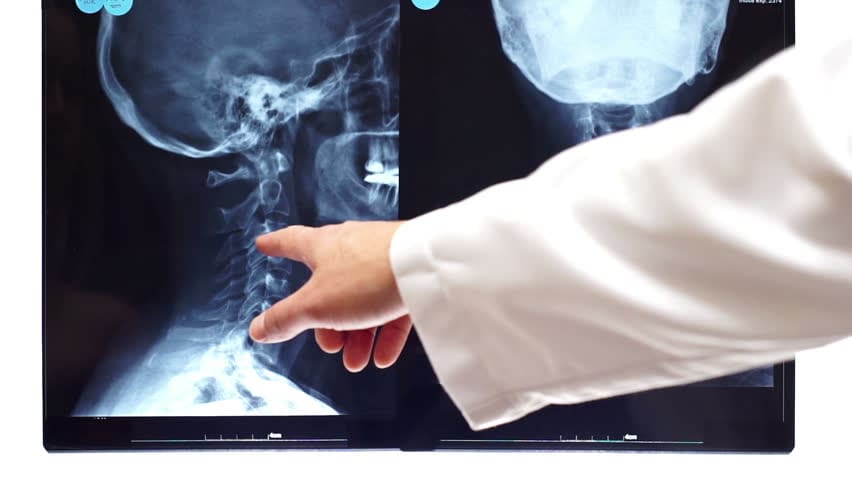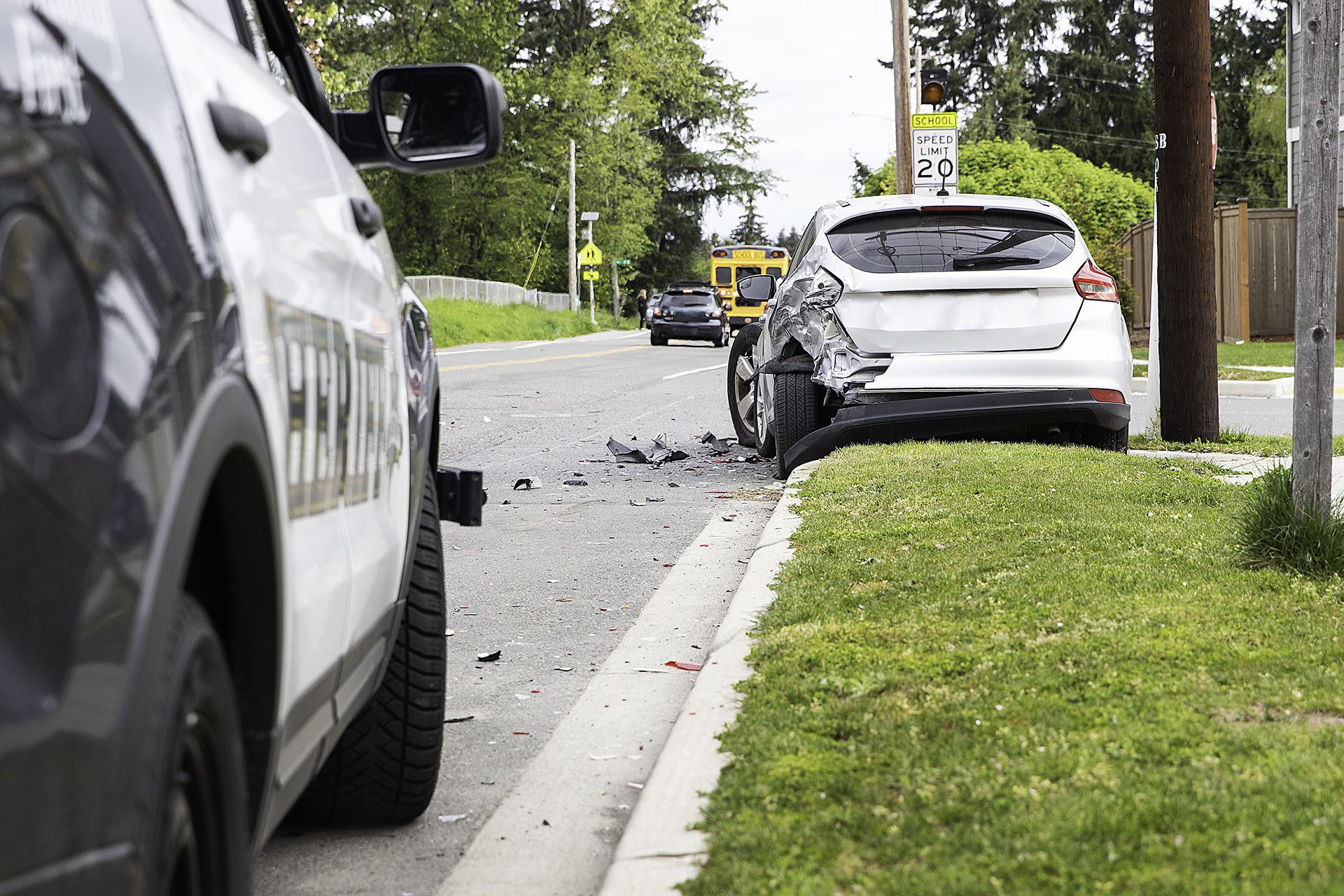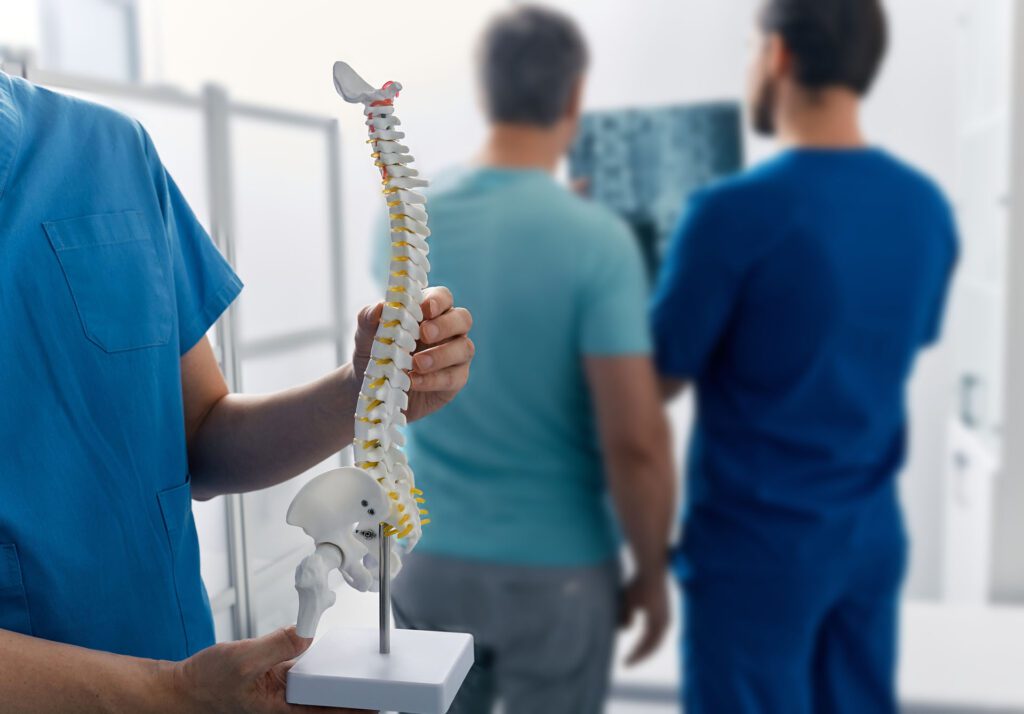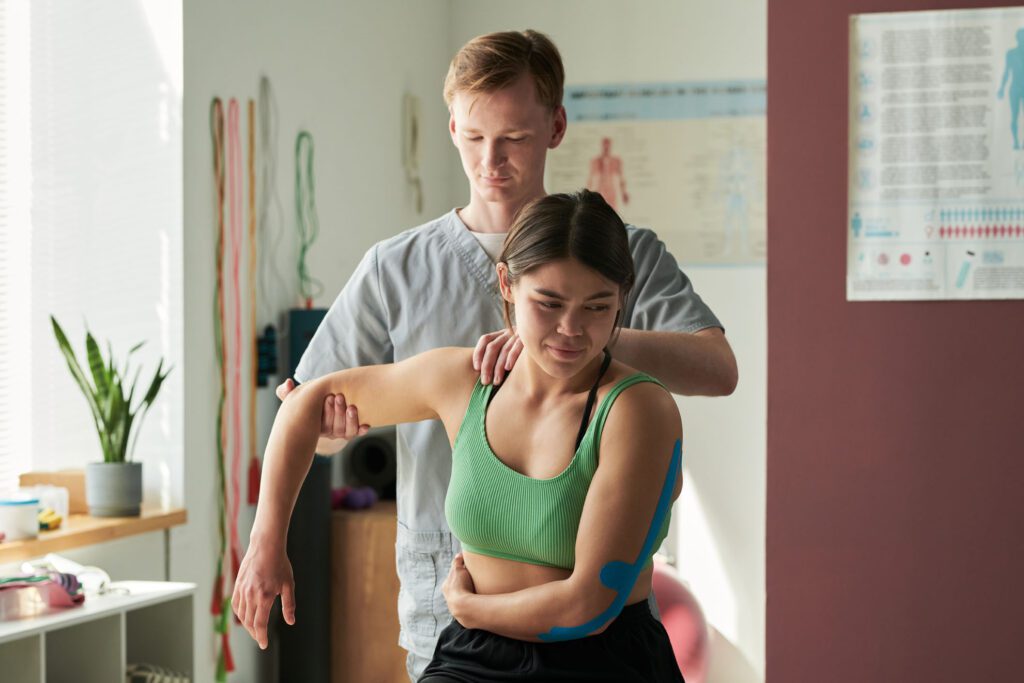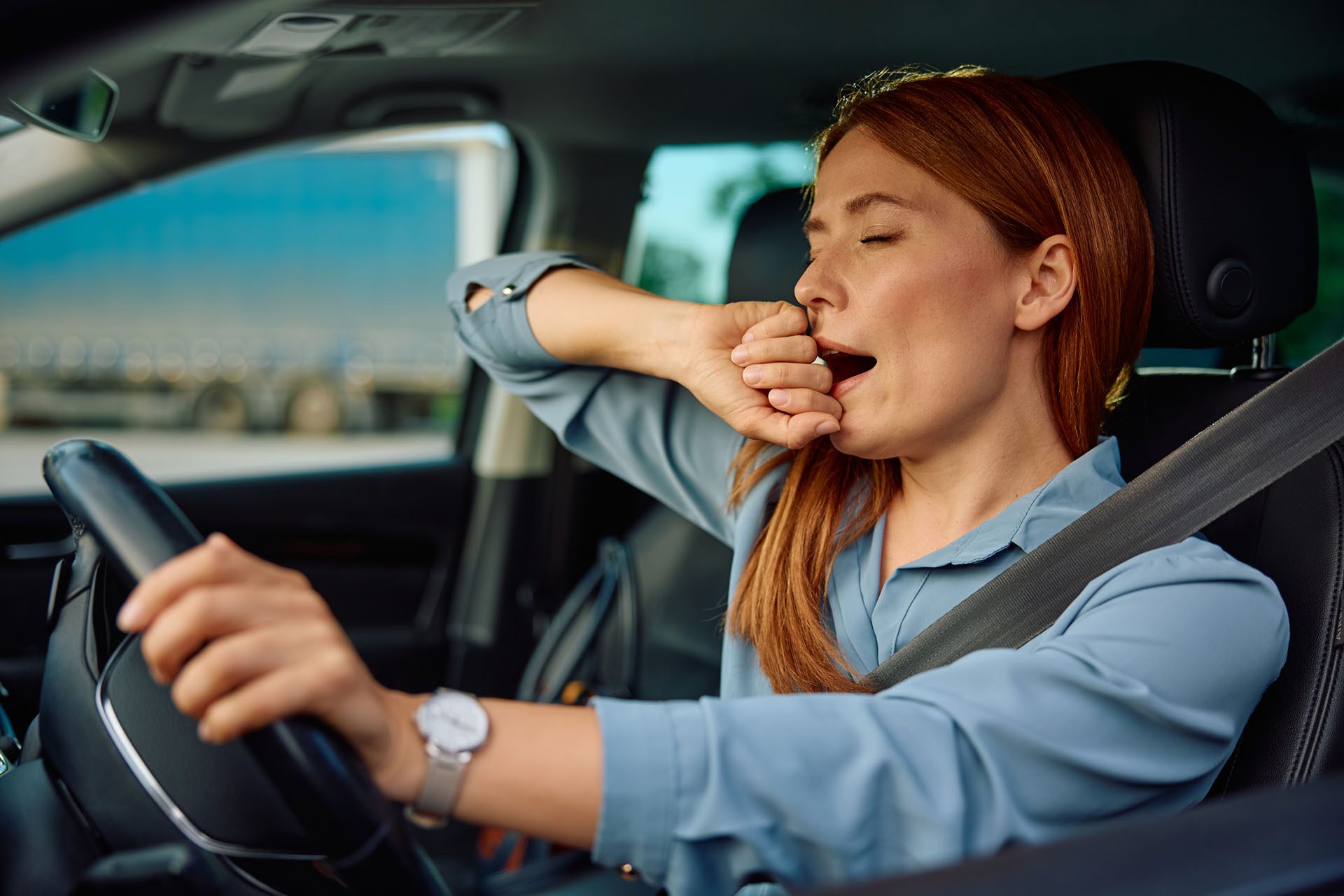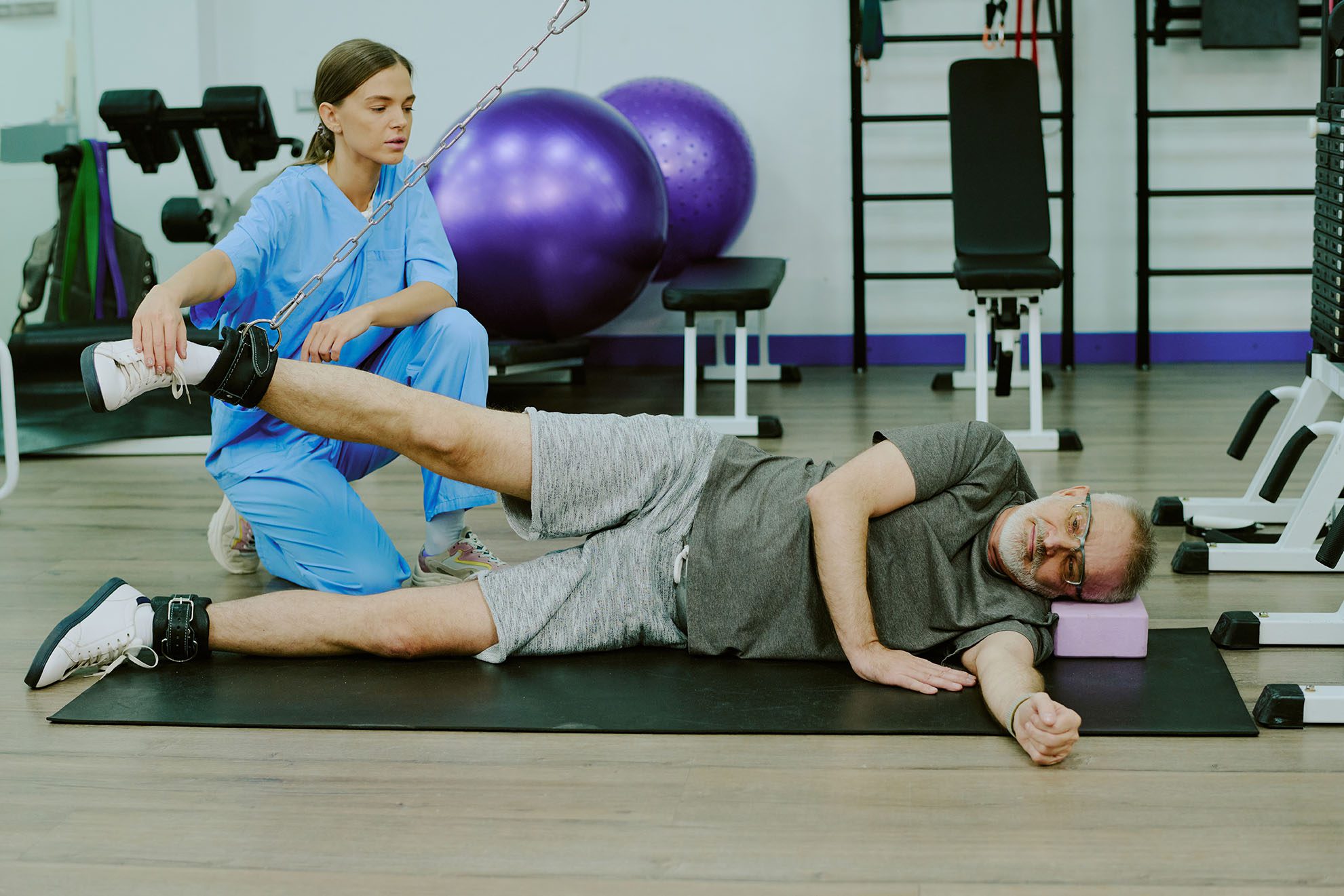Messy Meals, Major Risks: The Perils of Eating While Driving and Healing from Accidents

Eating while driving might seem like a convenient way to save time, but it’s a risky habit that can lead to serious consequences. Certain foods, especially those that are messy, greasy, hot, or require two hands to eat, significantly increase the risk of distracted driving. This behavior can cause motor vehicle accidents (MVAs), resulting in injuries, legal issues, and financial burdens. In this comprehensive guide, we’ll explore why eating while driving is dangerous. At the same time, driving is dangerous; highlight the most hazardous foods to avoid, and discuss the injuries that can result from accidents caused by distracted driving. We’ll also examine the role of chiropractic care, nurse practitioners, and integrative medicine in treating MVA-related injuries, with a focus on the expertise of Dr. Alexander Jimenez, a dual-licensed chiropractor and nurse practitioner in El Paso, Texas. By understanding these risks and recovery options, you can make safer choices on the road and prioritize your health.
Why Eating While Driving Is Dangerous
Eating while driving is a form of distracted driving, which diverts a driver’s attention from the road. According to the National Highway Traffic Safety Administration (NHTSA), distracted driving caused 3,308 fatalities in 2022 and contributes to over 45% of all MVAs (Winters & Yonker, 2024; Snyder, 2015). When you eat behind the wheel, you engage in three types of distractions:
- Visual Distraction: Looking away from the road to grab food, open packaging, or clean up spills.
- Manual Distraction: Taking one or both hands off the steering wheel to hold food or drinks.
- Cognitive Distraction: Focusing on eating rather than driving, which slows reaction times.
These distractions increase the likelihood of a crash by up to 80%, with eating-related distractions causing 65% of near-miss accidents (McCoy & Sparks, 2023; Reliable Plant, 2010). For example, reaching for a dropped item, like a French fry that fell under the seat, can take your eyes off the road for several seconds, enough time to travel the length of a football field at 55 mph (Barnes Firm, 2020). Even simple tasks, like sipping a drink, can delay reaction times, making it harder to respond to sudden changes in traffic (DontGetHitTwice, 2025).
The normalization of fast-food drive-thrus and on-the-go eating has made this behavior common, with 56.7% of Americans admitting to eating or drinking while driving (The Zebra, 2020). However, the risks are undeniable. A driver eating a messy taco or sipping hot coffee is less likely to notice a pedestrian, a traffic signal, or a vehicle braking ahead, increasing the chances of a collision.
References
- Barnes Firm. (2020). How common are car accidents due to eating while driving? https://www.thebarnesfirm.com[](https://www.thebarnesfirm.com/how-common-are-car-accidents-due-to-eating-while-driving/)
- DontGetHitTwice. (2025). The dangers of driving while eating: How it can cause a wreck. https://www.dontgethittwice.com[](https://www.farrin.com/blog/eating-while-driving-increases-crash-probability-80/)
- McCoy & Sparks. (2023). Eating while driving: Is it dangerous? https://www.mccoyandsparks.com[](https://www.mccoyandsparks.com/blog/eating-while-driving-is-it-dangerous/)
- Reliable Plant. (2010). 10 most dangerous foods to eat while driving. https://www.reliableplant.com[](https://www.munninsurance.com/eating-while-driving-the-top-10-most-dangerous-foods/)
- Snyder, E. (2015). Food for thought: Eating while driving. https://www.edgarsnyder.com[](https://www.edgarsnyder.com/resources/food-for-thought-how-risky-is-eating-while-driving)
- The Zebra. (2020). Dangerous meals while driving. https://www.thezebra.com[](https://www.arrivealive.mobi/healthy-eating-driver-fitness-and-safer-driving)
- Winters & Yonker. (2024). How common are car accidents due to eating while driving? https://www.wintersandyonker.com[](https://www.wintersandyonker.com/blog/how-common-are-car-accidents-due-to-eating-while-driving/)
The Most Dangerous Foods to Eat While Driving
Not all foods are equally hazardous when consumed behind the wheel. Foods that are messy, greasy, hot, or require two hands to eat pose the greatest risks due to their potential to cause spills, stains, or prolonged distractions. Below is a list of the top 10 most dangerous foods and beverages to avoid while driving, based on studies and expert analyses.
1. Coffee
Coffee tops the list as the most dangerous item to consume while driving. Its popularity, availability through drive-thrus, and hot temperature make it a significant hazard. Spilling hot coffee can result in burns, causing drivers to panic and divert their attention from the road. Morning commutes, when people are rushing to work, are particularly risky, as spills can ruin clothing and create a major distraction (Munn Insurance, 2020).
2. Soups
Hot soups, now available in to-go cups, are as dangerous as coffee due to their high temperature and potential for spills. A spilled bowl of soup can scald a driver, leading to sudden reactions that compromise vehicle control. The act of balancing a soup container also requires attention that should be focused on the road (TK Injury Lawyers, 2015).
3. Tacos
Tacos, while convenient fast food, often require two hands to eat, especially to prevent fillings from spilling. A dropped taco can create a mess on a driver’s lap, diverting their attention to clean-up rather than driving. The complexity of eating a taco makes it a high-risk food (C&B Law Group, 2024).
4. Fried Chicken
Fried chicken is greasy, leaving residue on hands and steering wheels. Reaching for napkins or wiping hands takes a driver’s focus away from the road. The multi-step process of eating fried chicken, including handling bones, amplifies the distraction (McCoy & Sparks, 2023).
5. Jelly or Cream-Filled Donuts
Donuts, especially those with jelly or cream fillings, are a breakfast staple, but they can also pose a driving hazard. When the filling oozes out, it can drip onto clothing or car seats, prompting drivers to clean up immediately, which takes their attention away from the road (Reliable Plant, 2010).
6. Soft Drinks
Soft drinks, particularly in large cups or bottles, can spill easily, especially if they fall out of cup holders. The act of taking a sip or reaching for a dropped bottle diverts attention and hands from the task of driving. Spilled soda can also create sticky messes that require immediate cleaning (Munn Insurance, 2020).
7. Chocolate
Chocolate is messy, leaving fingerprints on steering wheels, clothes, and seats. The instinctive reaction to clean chocolate stains can lead to prolonged distractions, as drivers focus on wiping their hands or clothing rather than the road (TK Injury Lawyers, 2015).
8. Barbecue
Barbecue foods, with their sticky sauces, are prone to dripping and staining. A driver attempting to manage barbecue sauce on their clothes or car interior is likely to lose focus, increasing the risk of an accident (Space Center Automotive, 2023).
9. Hamburgers
Hamburgers, especially those with multiple toppings, can fall apart while being eaten, requiring two hands to manage them effectively. The mess created by ketchup, mustard, or lettuce falling onto a driver’s lap can lead to significant distractions (Bailey Johnson, 2023).
10. Chili
Chili, like soup, is hot and prone to spills, making it a dangerous choice for drivers. The thick, messy nature of chili can create a substantial clean-up task, diverting a driver’s attention for extended periods (Justice For You, 2023).
Tips to Avoid Eating These Foods While Driving
- Plan Ahead: Eat meals before or after driving to avoid the temptation of snacking on the road.
- Store Food Safely: Keep food in the backseat or trunk to reduce access while driving.
- Choose Safer Drinks: If you must drink, use slim, easy-to-open containers that can be held with one hand.
- Pull Over: If eating is unavoidable, pull into a rest area or parking lot to eat safely.
By avoiding these high-risk foods and adopting safer habits, drivers can significantly reduce the likelihood of distracted driving accidents.
References
- Bailey Johnson. (2023). Eating while driving. https://baileyjohnson.com[](https://cblawgroup.com/ways-eating-food-increases-chances-of-car-accident/)
- C&B Law Group. (2024). 4 ways eating food can increase your chances of a car accident. https://cblawgroup.com[](https://newsinhealth.nih.gov/2020/06/safe-driving)
- Justice For You. (2023). Study reveals most dangerous food and drinks to eat while driving. https://www.justiceforyou.com[](https://www.tkinjurylawyers.com/top-10-most-dangerous-foods/)
- McCoy & Sparks. (2023). Eating while driving: Is it dangerous? https://www.mccoyandsparks.com[](https://www.mccoyandsparks.com/blog/eating-while-driving-is-it-dangerous/)
- Munn Insurance. (2020). Eating while driving & the top 10 most dangerous foods. https://www.munninsurance.com[](https://www.munninsurance.com/eating-while-driving-the-top-10-most-dangerous-foods/)
- Reliable Plant. (2010). 10 most dangerous foods to eat while driving. https://www.reliableplant.com[](https://www.munninsurance.com/eating-while-driving-the-top-10-most-dangerous-foods/)
- Space Center Automotive. (2023). What foods are most dangerous to eat while driving. https://www.spacecenterautomotive.com[](https://www.arrivealive.mobi/healthy-eating-driver-fitness-and-safer-driving)
- TK Injury Lawyers. (2015). Don’t eat and drive! Top 10 most dangerous foods. https://www.tkinjurylawyers.com[](https://www.tkinjurylawyers.com/top-10-most-dangerous-foods/)
Consequences of Eating While Driving
The consequences of eating while driving extend beyond minor inconveniences, such as spilled coffee or stained clothes. Distracted driving accidents can lead to severe injuries, legal troubles, and financial burdens, impacting drivers, passengers, and others on the road.
Injuries from MVAs
MVAs caused by distracted driving often result in musculoskeletal and nerve injuries, including:
- Whiplash: A common injury resulting from rear-end collisions, whiplash causes neck pain, stiffness, headaches, and dizziness due to the rapid movement of the neck (Mayo Clinic, as cited in Jimenez, 2025).
- Back and Neck Pain: Spinal misalignments or soft tissue damage can lead to chronic pain, limiting mobility and quality of life.
- Fractures and Nerve Damage: More severe accidents can cause broken bones or nerve injuries, requiring extensive treatment.
- Chronic Pain: Untreated injuries can develop into long-term conditions, such as fibromyalgia or degenerative disc disease (Accident Care Chiropractic, 2022).
These injuries can take weeks or months to manifest, as adrenaline and shock may initially mask symptoms (Oviedo Chiropractic, 2024). Early intervention is crucial in preventing long-term complications.
Legal and Financial Consequences
Drivers who cause accidents while eating may face:
- Fines and Tickets: While eating while driving is not explicitly illegal in most states, distracted driving behaviors like speeding or running red lights can lead to citations (Joye Law Firm, 2023).
- Increased Insurance Rates: Insurance companies may raise premiums or deny claims if distracted driving is a factor (Get Drivers Ed, 2023).
- Attorney Fees: Victims of distracted driving accidents may file personal injury claims, which often require legal representation for the at-fault driver (Farrin, 2024).
- Liability: Drivers eating at the time of a crash may be held liable for damages, medical expenses, and pain and suffering (C&B Law Group, 2024).
Emotional and Psychological Impact
MVAs can cause emotional trauma, including anxiety, stress, and sleep disturbances. These effects can exacerbate physical injuries, as stress often manifests as muscle tension or poor posture, slowing recovery (Oviedo Chiropractic, 2024).
References
- Accident Care Chiropractic. (2022). Chiropractor near me. https://accidentcarechiropractic.com[](https://accidentcarechiropractic.com/)
- C&B Law Group. (2024). 4 ways eating food can increase your chances of a car accident. https://cblawgroup.com[](https://newsinhealth.nih.gov/2020/06/safe-driving)
- Farrin, J. S. (2024). Eating while driving increases crash probability 80%. https://www.farrin.com[](https://www.farrin.com/blog/eating-while-driving-increases-crash-probability-80/)
- Get Drivers Ed. (2023). Eating and driving: How dangerous is it really? https://getdriversed.com[](https://getdriversed.com/blog-details/eating-and-driving-dangers-and-safety-tips)
- Jimenez, A. (2025). Post-automobile accident recovery and healing foods. https://dralexjimenez.com[](https://dralexjimenez.com/post-automobile-accident-recovery-and-healing-foods/)
- Joye Law Firm. (2023). Is eating while driving as dangerous as texting in South Carolina? https://www.joyelawfirm.com[](https://www.joyelawfirm.com/blog/is-eating-while-driving-dangerous/)
- Oviedo Chiropractic. (2024). 10 reasons to see a car accident chiropractor. https://chiropractorinoviedo.com[](https://chiropractorinoviedo.com/blog/10-reasons-you-should-see-a-car-accident-chiropractor/)
The Role of Chiropractic Care in MVA Recovery
Chiropractic care is a cornerstone of recovery for MVA victims, offering a non-invasive, drug-free approach to treating musculoskeletal injuries. Chiropractors focus on correcting spinal misalignments, reducing inflammation, and restoring mobility, addressing the root causes of pain rather than masking symptoms with medication.
Benefits of Chiropractic Care
- Pain Relief: Spinal adjustments and soft tissue therapy alleviate neck, back, and joint pain without reliance on painkillers (Cleveland Clinic, 2023).
- Improved Mobility: Chiropractic treatments restore range of motion, preventing stiffness and long-term dysfunction (Accident Care Chiropractic, 2022).
- Prevention of Chronic Pain: Early intervention reduces the risk of chronic conditions, such as degenerative disc disease or scar tissue formation (Cedar Park Chiropractic, 2023).
- Stress Reduction: Adjustments balance the nervous system, relieving physical tension caused by emotional stress (Oviedo Chiropractic, 2024).
Chiropractic care is particularly effective for whiplash, a common MVA injury, as it corrects cervical spine misalignments and reduces associated pain and headaches (PMC, 1991).
Integrative Medicine in Recovery
Integrative medicine complements chiropractic care by combining conventional and alternative therapies. Techniques such as acupuncture, massage therapy, and nutritional counseling address both the physical and systemic effects of injuries. For example, acupuncture reduces inflammation, while massage therapy relieves muscle tension (Jimenez, 2025). Nutrition plays a critical role, with anti-inflammatory diets supporting tissue repair and overall healing (Jimenez, 2025).
References
- Accident Care Chiropractic. (2022). Chiropractor near me. https://accidentcarechiropractic.com[](https://accidentcarechiropractic.com/)
- Cedar Park Chiropractic. (2023). 8 reasons why you need to visit a chiropractor after a car accident. https://cedarparkchiro.com[](https://cedarparkchiro.com/chiropractic-car-accident-treatment/)
- Cleveland Clinic. (2023). Chiropractic adjustment care, treatment & benefits. https://my.clevelandclinic.org[](https://my.clevelandclinic.org/health/treatments/21033-chiropractic-adjustment)
- Jimenez, A. (2025). Post-automobile accident recovery and healing foods. https://dralexjimenez.com[](https://dralexjimenez.com/post-automobile-accident-recovery-and-healing-foods/)
- Oviedo Chiropractic. (2024). 10 reasons to see a car accident chiropractor. https://chiropractorinoviedo.com[](https://chiropractorinoviedo.com/blog/10-reasons-you-should-see-a-car-accident-chiropractor/)
- PMC. (1991). Chiropractic treatment of patients in motor vehicle accidents: A statistical analysis. https://pmc.ncbi.nlm.nih.gov[](https://pmc.ncbi.nlm.nih.gov/articles/PMC2484939/)
Dr. Alexander Jimenez: Expertise in MVA Treatment
Dr. Alexander Jimenez, DC, APRN, FNP-BC, is a dual-licensed chiropractor and board-certified family nurse practitioner in El Paso, Texas, with over 25 years of experience treating MVA injuries. His unique qualifications and integrative approach make him a leader in the field, offering comprehensive care that addresses both medical and legal needs of accident victims.
Dual-Scope Diagnosis and Treatment
Dr. Jimenez’s dual licensure allows him to integrate chiropractic and medical perspectives, providing a holistic approach to diagnosis and treatment. His clinical rationale emphasizes correlating patient symptoms with objective findings to ensure accurate diagnoses. For example, a patient with neck pain after a rear-end collision may undergo an MRI to detect cervical spine issues, followed by a tailored treatment plan combining spinal adjustments, acupuncture, and nutritional counseling (Jimenez, 2024a).
This dual-scope approach is particularly effective for complex injuries like whiplash, disc herniations, or nerve damage, which require both biomechanical and systemic interventions. By addressing the root causes of injuries, Dr. Jimenez helps patients achieve faster recovery and prevent long-term complications (Jimenez, 2025).
Advanced Imaging and Diagnostic Assessments
Dr. Jimenez leverages advanced diagnostics to validate injuries and support treatment planning. His clinic, Injury Medical & Chiropractic Center, uses:
- MRI and CT Scans: To detect soft tissue damage, ligament tears, or disc herniations.
- Electromyography (EMG): To assess nerve injuries.
- Functional Movement Screens: To evaluate mobility and posture.
- Neurologic Exams: To identify subtle nerve damage (Jimenez, 2024c).
These tools allow Dr. Jimenez to create personalized treatment plans and provide objective evidence for legal documentation, increasing the credibility of injury reports in personal injury claims (Chiropractic Scientist, 2025).
Legal Documentation Expertise
Dr. Jimenez’s expertise extends to the legal aspects of MVA recovery. His dual licensure and use of advanced diagnostics enable him to produce detailed, medically credible reports that support personal injury claims. For example, imaging results and functional assessments can validate the extent of injuries, ensuring victims receive appropriate compensation for medical expenses, lost wages, and pain and suffering (Jimenez, 2024a). This integration of medical and legal support is critical for navigating the complexities of insurance claims and lawsuits.
Distinctive Competencies
Dr. Jimenez’s distinctive competencies include:
- Dual Licensure: Combining chiropractic and nurse practitioner expertise for comprehensive care.
- Advanced Diagnostics: Using cutting-edge imaging and assessments to ensure accurate diagnoses.
- Integrative Medicine: Incorporating chiropractic, acupuncture, massage, and nutrition for holistic recovery.
- Legal-Medical Integration: Providing robust documentation to support personal injury claims.
- Patient-Centered Care: Designing personalized treatment plans based on individual needs and symptoms (Jimenez, 2025).
His practice aligns with evidence-based protocols inspired by integrative medicine principles, focusing on restoring health naturally for patients of all ages (ChiroMed, 2023).
References
- ChiroMed. (2023). Dr. Alex Jimenez. https://chiromed.com[](https://dralexjimenez.com/chiropractic-care-after-accidents-and-injuries-el-paso-tx-2023/)
- Chiropractic Scientist. (2025). Post-car accident physical therapy approaches to recovery. https://chiropracticscientist.com[](https://chiropracticscientist.com/post-car-accident-physical-therapy-approaches-to-recovery/)
- Jimenez, A. (2024a). Nurse practitioner injury support in MVA cases. https://sciatica.clinic[](https://sciatica.clinic/nurse-practitioner-injury-support-in-mva-cases/)
- Jimenez, A. (2024c). Motor vehicle accident recovery and integrative care. https://personalinjurydoctorgroup.com[](https://personalinjurydoctorgroup.com/2025/06/26/motor-vehicle-accident-recovery-and-integrative-care/amp/)
- Jimenez, A. (2025). Post-automobile accident recovery and healing foods. https://dralexjimenez.com[](https://dralexjimenez.com/post-automobile-accident-recovery-and-healing-foods/)
- LinkedIn. (2025). Dr. Alexander Jimenez. https://www.linkedin.com/in/dralexjimenez/
The Role of Nurse Practitioners in MVA Recovery
Nurse practitioners (NPs) play a vital role in MVA recovery, particularly in integrative care settings. NPs like Dr. Jimenez, who are board-certified in family practice, bring medical expertise to complement chiropractic and alternative therapies. Their responsibilities include:
- Medical Assessments: Conducting thorough evaluations to identify injuries and coexisting conditions.
- Treatment Coordination: Collaborating with chiropractors, physical therapists, and other specialists to create comprehensive care plans.
- Patient Education: Guiding patients on nutrition, exercise, and stress management to support recovery.
- Legal Support: Providing medical documentation for insurance claims and legal proceedings (Jimenez, 2024a).
NPs are particularly valuable in managing systemic effects of injuries, such as inflammation or chronic pain, through medication management (when necessary) and lifestyle interventions. Their holistic approach ensures that both physical and emotional aspects of recovery are addressed (Sciatica Clinic, 2025).
References
- Jimenez, A. (2024a). Nurse practitioner injury support in MVA cases. https://sciatica.clinic[](https://sciatica.clinic/nurse-practitioner-injury-support-in-mva-cases/)
- Sciatica Clinic. (2025). Nurse practitioner injury support in MVA cases. https://sciatica.clinic[](https://sciatica.clinic/nurse-practitioner-injury-support-in-mva-cases/)
Integrative Medicine: A Holistic Approach
Integrative medicine combines conventional and alternative therapies to treat the whole person, not just the symptoms. For MVA victims, this approach is highly effective in addressing the multifaceted nature of injuries. Key components include:
- Chiropractic Adjustments: Correcting spinal misalignments to reduce pain and improve function.
- Acupuncture: Reducing inflammation and promoting pain relief through targeted needle therapy.
- Massage Therapy: Relieving muscle tension and improving circulation.
- Nutritional Counseling: Supporting tissue repair with anti-inflammatory diets rich in fruits, vegetables, and omega-3 fatty acids.
- Physical Therapy: Restoring strength, mobility, and posture through targeted exercises (Jimenez, 2025).
Integrative medicine empowers patients to take an active role in their recovery, promoting long-term health and preventing future complications. Dr. Jimenez’s practice exemplifies this approach, using a systems-based model that addresses the root causes of injuries (ChiroMed, 2023).
References
- ChiroMed. (2023). Dr. Alex Jimenez. https://chiromed.com[](https://dralexjimenez.com/chiropractic-care-after-accidents-and-injuries-el-paso-tx-2023/)
- Jimenez, A. (2025). Post-automobile accident recovery and healing foods. https://dralexjimenez.com[](https://dralexjimenez.com/post-automobile-accident-recovery-and-healing-foods/)
Preventing Distracted Driving: Practical Tips
The safest way to avoid the dangers of eating while driving is to eliminate the behavior. Here are practical tips to prevent distracted driving:
- Eat Before or After Driving: Schedule meals to avoid eating while driving.
- Keep Food Out of Reach: Store snacks in the trunk or backseat to reduce temptation.
- Use Rest Areas: Pull over to eat or drink in a safe location.
- Encourage Passengers to Help: Passengers can assist with managing food or drinks to keep the driver focused.
- Educate Young Drivers: Teach teens and new drivers the risks of eating while driving to build safe habits (Justin For Justice, 2025).
By prioritizing safety and planning, drivers can reduce the risk of accidents and protect themselves and others on the road.
References
- Justin For Justice. (2025). Eating and driving: How it increases accident risk. https://justinforjustice.com[](https://justinforjustice.com/eating-and-driving-how-it-increases-accident-risk/)
Conclusion
Eating while driving is a dangerous form of distracted driving that significantly increases the risk of motor vehicle accidents. Foods that are messy, greasy, hot, or require two hands to eat—like coffee, tacos, or fried chicken—pose the greatest hazards due to their potential to cause spills, stains, or prolonged distractions. The consequences of these accidents can be severe, including musculoskeletal and nerve injuries, chronic pain, legal liabilities, and financial burdens. Chiropractic care, nurse practitioners, and integrative medicine offer effective solutions for recovering from MVA-related injuries, with Dr. Alexander Jimenez leading the way in El Paso, Texas. His dual licensure, advanced diagnostics, and integrative approach ensure comprehensive care that addresses both medical and legal needs. By avoiding eating while driving and seeking prompt medical attention for injuries, you can safeguard your safety and health on the road.
For more information on MVA recovery or to schedule an appointment with Dr. Jimenez, visit dralexjimenez.com or contact his clinic at (915) 850-0900.
Reference List
Accident Care Chiropractic. (2022). Chiropractor near me. https://accidentcarechiropractic.com
Bailey Johnson. (2023). Eating while driving. https://baileyjohnson.com/blog/eating-while-driving/
Barnes Firm. (2020). How common are car accidents due to eating while driving? https://www.thebarnesfirm.com
C&B Law Group. (2024). 4 ways eating food can increase your chances of a car accident. https://cblawgroup.com/ways-eating-food-increases-chances-of-car-accident/
Cedar Park Chiropractic. (2023). 8 reasons why you need to visit a chiropractor after a car accident. https://cedarparkchiro.com
ChiroMed. (2023). Dr. Alex Jimenez. https://chiromed.com
Chiropractic Scientist. (2025). Post-car accident physical therapy approaches to recovery. https://chiropracticscientist.com
Cleveland Clinic. (2023). Chiropractic adjustment care, treatment & benefits. https://my.clevelandclinic.org/health/treatments/21033-chiropractic-adjustment
DontGetHitTwice. (2025). The dangers of driving while eating: How it can cause a wreck. https://www.dontgethittwice.com/blog/2025/march/the-dangers-of-driving-while-eating-how-it-can-c/
Farrin, J. S. (2024). Eating while driving increases crash probability 80%. https://www.farrin.com/blog/eating-while-driving-increases-crash-probability-80/
Get Drivers Ed. (2023). Eating and driving: How dangerous is it really? https://getdriversed.com/post/eating-and-driving-how-dangerous-is-it-really
Jimenez, A. (2024a). Nurse practitioner injury support in MVA cases. https://sciatica.clinic/nurse-practitioner-injury-support-in-mva-cases/
Jimenez, A. (2024c). Motor vehicle accident recovery and integrative care. https://personalinjurydoctorgroup.com/motor-vehicle-accident-recovery-and-integrative-care/
Jimenez, A. (2025). Post-automobile accident recovery and healing foods. https://dralexjimenez.com/post-automobile-accident-recovery-and-healing-foods/
Joye Law Firm. (2023). Is eating while driving as dangerous as texting in South Carolina? https://www.joyelawfirm.com/2023/09/is-eating-while-driving-dangerous/
Justin For Justice. (2025). Eating and driving: How it increases accident risk. https://justinforjustice.com/eating-and-driving-how-it-increases-accident-risk/
Justice For You. (2023). Study reveals most dangerous food and drinks to eat while driving. https://www.justiceforyou.com/blog/study-reveals-most-dangerous-food-and-drinks-to-eat-while-driving/
LinkedIn. (2025). Dr. Alexander Jimenez. https://www.linkedin.com/in/dralexjimenez/
McCoy & Sparks. (2023). Eating while driving: Is it dangerous? https://www.mccoyandsparks.com/blog/eating-while-driving-is-it-dangerous/
Munn Insurance. (2020). Eating while driving & the top 10 most dangerous foods. https://www.munninsurance.com/in-the-news/eating-while-driving/
Oviedo Chiropractic. (2024). 10 reasons to see a car accident chiropractor. https://chiropractorinoviedo.com/10-reasons-to-see-a-car-accident-chiropractor/
PMC. (1991). Chiropractic treatment of patients in motor vehicle accidents: A statistical analysis. https://pmc.ncbi.nlm.nih.gov/articles/PMC2484939/
Reliable Plant. (2010). 10 most dangerous foods to eat while driving. https://www.reliableplant.com/Read/18890/10-most-dangerous-foods-to-eat-while-driving
Sciatica Clinic. (2025). Nurse practitioner injury support in MVA cases. https://sciatica.clinic/nurse-practitioner-injury-support-in-mva-cases/
Snyder, E. (2015). Food for thought: Eating while driving. https://www.edgarsnyder.com/car-accident/cause-of-accident/cell-phone/food-eating-while-driving.html
Space Center Automotive. (2023). What foods are most dangerous to eat while driving. https://www.spacecenterautomotive.com/blog/what-foods-are-most-dangerous-to-eat-while-driving
The Zebra. (2020). Dangerous meals while driving. https://www.thezebra.com/resources/driving/dangerous-meals-while-driving/
TK Injury Lawyers. (2015). Don’t eat and drive! Top 10 most dangerous foods. https://www.tkinjurylawyers.com/dont-eat-and-drive-top-10-most-dangerous-foods/
Winters & Yonker. (2024). How common are car accidents due to eating while driving? https://www.wintersandyonker.com/blog/how-common-are-car-accidents-due-to-eating-while-driving/







